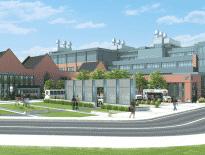Perhaps the most important moment in the history of the automobile industry was when Henry Ford developed and deployed the world’s first moving assembly line in 1913. This new method of manufacturing increased productivity and efficiency exponentially, allowing Ford Motor Company to offer the Model T, a “car for the masses,” at a price point that made automobile ownership in reach for the first time for hundreds of thousands of Americans.
In the end, the moving assembly line was simply a version of continuous flow manufacturing, a principle that had already been successfully deployed in the food industry, from breweries to abattoirs. Nevertheless, Ford’s innovation was transformative for heavy industry, kicking off an era of American manufacturing superiority where innovation was synonymous with not just the product, but also production.
Today’s life sciences industry stands at the same precipice, faced with similar economic, process design and efficiency challenges in manufacturing as faced by heavy industry over a century ago. In no area can this be felt more acutely than with the manufacture of large molecule therapies, or biologics. Biologics are “living drugs,” and differ from small molecules in that their constituent parts are made by other living organisms (yeasts, viruses and the like). In terms of complexity, one might consider biologics versus small molecule manufacturing as the difference between manufacturing a 10-speed bicycle and an Airbus A380.
And yet some of the world’s most exciting research in the life sciences is taking place with biologics. CAR-T therapies like the recently FDA-approved Kymriah are ushering in a new era of precision medicine and immunotherapy, where an individual’s own T-cells are harvested, modified, and re-inserted to help the human body tackle diseases like cancer.
These new techniques are being advanced in laboratories across Massachusetts and serve as the backbone of the state’s world-leading life sciences ecosystem. These techniques also present the state with an opportunity – our own “Henry Ford moment” – to develop new manufacturing capacities that will, together with our research and development primacy, transform the state’s biopharma industry for another generation.
New advanced biomanufacturing capacities would introduce efficiencies benefitting producer and consumer alike, create a diverse local pipeline of workforce opportunities focused on manufacturing innovation, and integrate the biomanufacturing process with research and development in a way that would uniquely allow Massachusetts researchers to accelerate into the breakthrough curve.
At the Massachusetts Life Sciences Center, we have already begun working with our partners in industry toward this vision. In the past three years, companies have invested over $1.5 billion in new advanced manufacturing capacity in Massachusetts, facilitated, in part, by the center. These facilities are geographically dispersed, almost entirely outside of Boston and Cambridge, in towns like Andover, Norwood, Milford and Walpole. Because of these investments and others, Massachusetts is one of the few states in the U.S. gaining, instead shedding, net new employment in life sciences manufacturing.
Massachusetts biopharma manufacturing employment grew by 6.3 percent in 2015.
Massachusetts biopharma manufacturing has grown by 33.6 percent since 2006.
In the same period, the U.S. lost more than 24,000 biopharma manufacturing jobs, a 7.9 percent decrease.
These facilities are critical pieces of infrastructure, and as such, support skilled labor jobs in construction, engineering and facility maintenance to build and operate. Moreover they pay well – according to the industry trade group MassBioEd, biomanufacturing jobs command an average salary approaching $75,000 year.
Increasingly, industry leaders are demanding that manufacturing innovation take place in close proximity to research and development. Process design, quality control and quality assurance are core elements of the FDA approval process, as well as access to product for clinical trials. In short, manufacturing cannot be taken for granted as part of the innovation cycle.
The center will continue to partner with industry, higher education, workforce training, as well as local municipalities, to ensure that the Massachusetts ecosystem is the best platform to discover, invent and make novel and breakthrough therapies for patients around the world.
Travis McCready is president and CEO of the Massachusetts Life Sciences Center.




 |
| 




